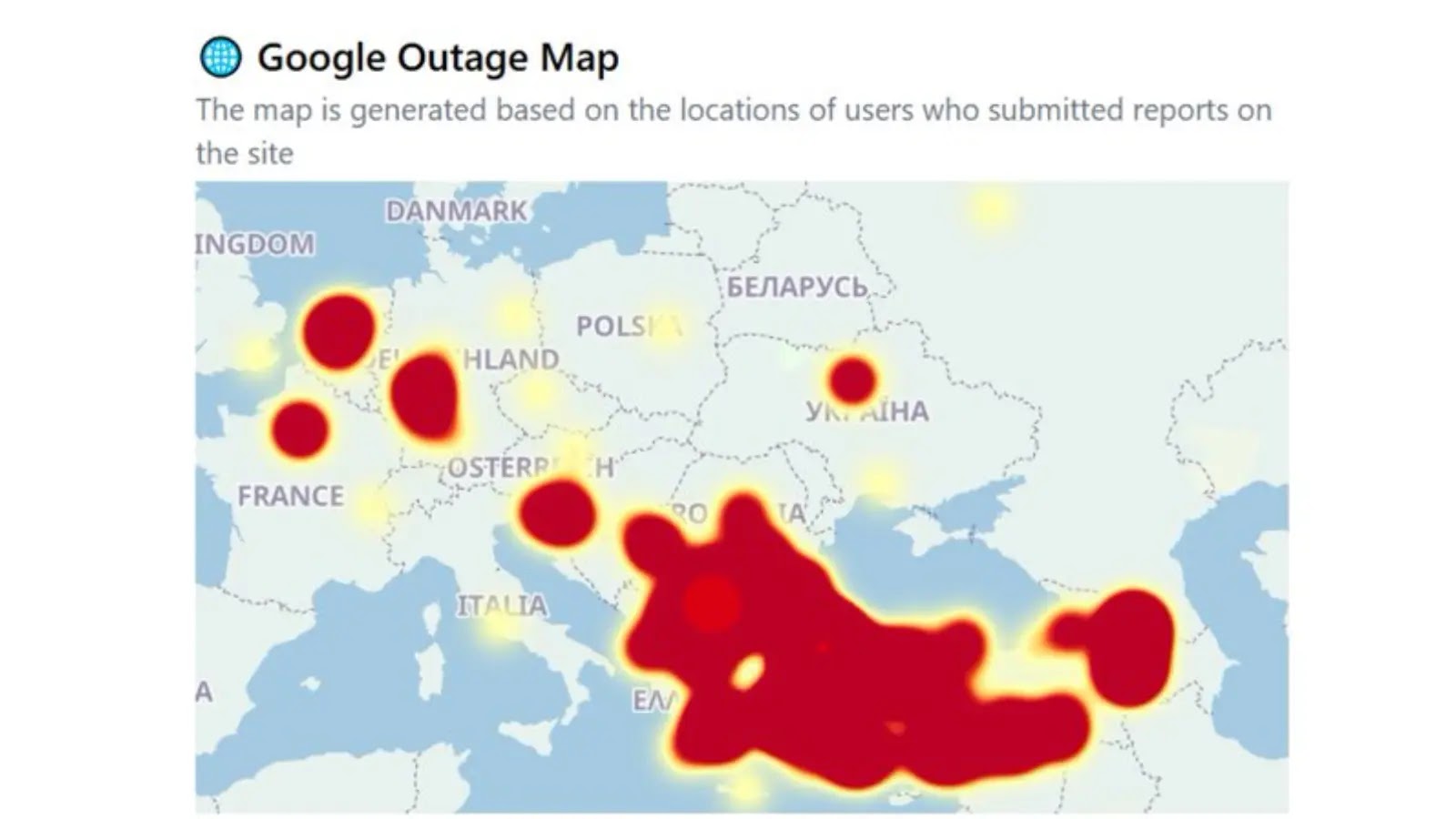
Google Services Down For Most Of The Users In US, Turkey And Eastern Europe
A global digital backbone momentarily faltered, leaving millions adrift. On Thursday morning, a significant outage crippled Google’s extensive suite of services, affecting users across the United States, Turkey, and various countries in Eastern Europe. This wasn’t merely a minor glitch; it was a widespread disruption that underscored the critical role Google plays in our interconnected world and highlighted the inherent vulnerabilities of large-scale cloud infrastructure.
The Scope of the Google Outage
The incident, as reported by Cybersecurity News, saw core Google services—its ubiquitous search engine, Gmail, and YouTube—become inaccessible to a large user base. The ripple effect extended far beyond these flagship platforms, ensnaring Google Maps, Drive, and Analytics, rendering essential digital operations impossible for many. Monitoring services like Downdetector quickly registered a massive surge in outage reports, confirming the pervasive nature of the disruption.
This type of widespread service interruption, while not explicitly a cybersecurity breach in the traditional sense, can have significant knock-on effects. For businesses and individuals relying heavily on Google’s ecosystem, even a temporary absence can lead to:
- Productivity Loss: Inability to access email, documents, or collaboration tools brings work to a standstill.
- Business Operations Interruption: E-commerce sites, marketing campaigns, and customer service dependent on Google Analytics or Workspace can suffer immediate negative impacts.
- Information Blockage: The core function of searching for information, a daily necessity for billions, was impaired.
Understanding Cloud Service Dependencies
The Google outage serves as a stark reminder of our collective reliance on vast, centralized cloud infrastructures. While these platforms offer unparalleled scalability, accessibility, and convenience, they also present a single point of failure. When a core system experiences issues, the cascading effect can be immense, impacting everything built upon it.
Modern enterprises increasingly adopt a cloud-first strategy, leveraging services from providers like Google Cloud, Amazon Web Services (AWS), and Microsoft Azure. While this offers numerous advantages, it also necessitates a robust understanding of dependency management and disaster recovery planning. Organizations must evaluate their exposure to such outages and develop contingency plans for when essential third-party services become unavailable.
Potential Causes and Resiliency Measures
While Google did not immediately disclose the specific technical cause of this particular outage, common reasons for such widespread service disruptions often include:
- Network Infrastructure Failures: Issues with routing, DNS, or backbone connectivity can severely impact accessibility.
- Software Bugs or Configuration Errors: A faulty software deployment or misconfigured server can propagate quickly across a distributed system.
- Hardware Malfunctions: Failures in critical data center equipment.
- Distributed Denial of Service (DDoS) Attacks: While less likely for a service of Google’s scale to be brought down entirely by a simple DDoS, sophisticated, multi-vector attacks could potentially contribute.
For organizations, understanding these potential causes is crucial for building resilient systems. Key strategies include:
- Multi-Cloud or Hybrid Cloud Strategies: Diversifying critical workloads across different cloud providers or combining cloud with on-premise infrastructure reduces dependence on a single vendor.
- Redundant Systems and Failover Mechanisms: Implementing backup systems and automatic failover to alternative regions or data centers ensures continuity.
- Robust Monitoring and Alerting: Early detection of issues allows for quicker response and mitigation.
- Offline Capabilities and Local Backups: For critical data, maintaining local copies or enabling offline access can mitigate disruption during outages.
Remediation Actions for Businesses and Users
When major service providers experience outages, directly rectifying their issues is beyond the scope of individual users or even most businesses. However, proactive measures can significantly mitigate the impact. There isn’t a specific CVE associated with general service outages like this unless an underlying vulnerability was exploited to cause the outage (e.g., CVE-2023-XXXX, if applicable to a specific software component, though none has been publicly linked to this particular event).
Instead, the focus is on resilience and preparedness:
- Review Service Level Agreements (SLAs): Understand the uptime guarantees and compensation mechanisms offered by your cloud providers.
- Implement Data Redundancy and Backups: Do not solely rely on cloud providers for data persistence. Implement your own backup strategies for critical information.
- Diversify Communication Channels: Have alternative methods of communication (e.g., Slack, Microsoft Teams, traditional phone calls) for internal and external communication when primary channels like Gmail are down.
- Establish Alternative Productivity Tools: Identify and train employees on backup document editing or project management tools that are not tied to a single cloud provider.
- Educate Users: Inform employees and stakeholders about the potential for outages and the established contingency plans.
- Monitor Status Pages: Bookmark and regularly check the status pages of your key service providers (e.g., Google Cloud Status Dashboard, AWS Service Health Dashboard) for real-time updates.
Conclusion
The recent Google services outage served as a powerful reminder of the delicate balance between convenience and resilience in the digital age. While such incidents are often temporary, their widespread impact underscores the imperative for robust contingency planning and a granular understanding of our digital supply chains. For individuals and enterprises alike, preparedness isn’t merely an option, but a necessity to navigate an increasingly interconnected and occasionally unpredictable digital landscape.





